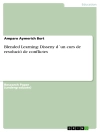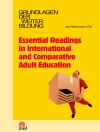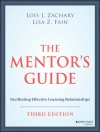Many adults attend financial education classes to helpthem make more informed financial decisions, based ontheir
* knowledge of their financial situation
* available cash or funds
* planned expenditures.
This volume brings together scholars from the fields of adulteducation and financial literacy and covers topics that revealthe interrelatedness of the two fields. They show how concepts andknowledge about adult education can be utilized in and illuminatefinancial education, and they offer insights about how financialeducation, as an eminently practical subject, shows adults learningand putting their new knowledge into action.
This is the 141st volume of this Jossey-Bass series. Noted for itsdepth of coverage, it explores issues of common interest toinstructors, administrators, counselors, and policymakers in abroad range of adult and continuing education settings, such ascolleges and universities, extension programs, businesses, libraries, and museums.
İçerik tablosu
EDITORS’ NOTES 1
Karin Sprow Fort´e, Edward W. Taylor, Elizabeth J.Tisdell
1. Sociocultural Issues in Adult Financial Education5
Karin Sprow Fort´e
This chapter introduces the volume on financial literacyeducation and discusses the role of sociocultural factors, such asrace, gender, socioeconomic class, language, and age, in adultlearning.
2. Structural Barriers, Financial Exclusion, and the Possibilities of Situated Learning for Financial Education15
Jerry Buckland
This chapter explores financial exclusion through the lens ofadult situated learning in financial education.
3. Contextual Influences on Financial Behavior: A Proposed Model for Adult Financial Literacy Education 25
Wendy L. Way
An ecological model is used to demonstrate the importance ofmultiple contextual influences on financial behavior and learningto inform research design and practice aimed at enhancing financialcapability.
4. Financial Literacy Education for Women 37
Jodi Jarecke, Edward W. Taylor, Tahira K. Hira
This chapter provides an overview of financial education forwomen, specifically exploring pedagogical approaches inwomen’s financial education programs and offering strategiesfor teaching women about finance.
5. Financial Literacy: A Critical Adult Education Appraisal47
Leona M. English
This chapter provides a critical view of financial literacyeducation, exploring its assumptions and needs in curricula and inthe people being taught to be financially literate.
6. Economic Inclusion and Financial Education in Culturally Diverse Communities: Leveraging Cultural Capital and Whole-Family Learning 57
B´arbara J. Robles
The utility of recognizing the whole-family learning process infinancial education is explored in this chapter, focusing ontraditionally marginalized communities.
7. Raising Employee Engagement Through Workplace Financial Education 67
Lois A. Vitt
Addressing changes in the employment landscape, this chapteroffers a look at workplace financial education and argues foremployers taking a greater role in educating employees.
8. Measuring the Impacts of Financial Literacy: Challengesfor Community-Based Financial Education 79
J. Michael Collins, Karen C. Holden
This chapter discusses the difficulty in assessing financialeducation effectiveness, and how the assessments have the potentialto enlighten researchers about financial education across thelifespan.
9. The Role of Emotions and Assumptions in Culturally Responsive Financial Education Practice in a Capitalist Economy89
Elizabeth J. Tisdell
This chapter concludes the volume with further discussion ofassumptions of financial education, and then examines culturallyresponsive financial education practice and the role of emotions, beliefs, and attitudes.
INDEX 99
Yazar hakkında
Karin Sprow Forté and Edward W. Taylor are the authors of Financial Literacy and Adult Education: New Directions for Adult and Continuing Education, Number 141, published by Wiley.












